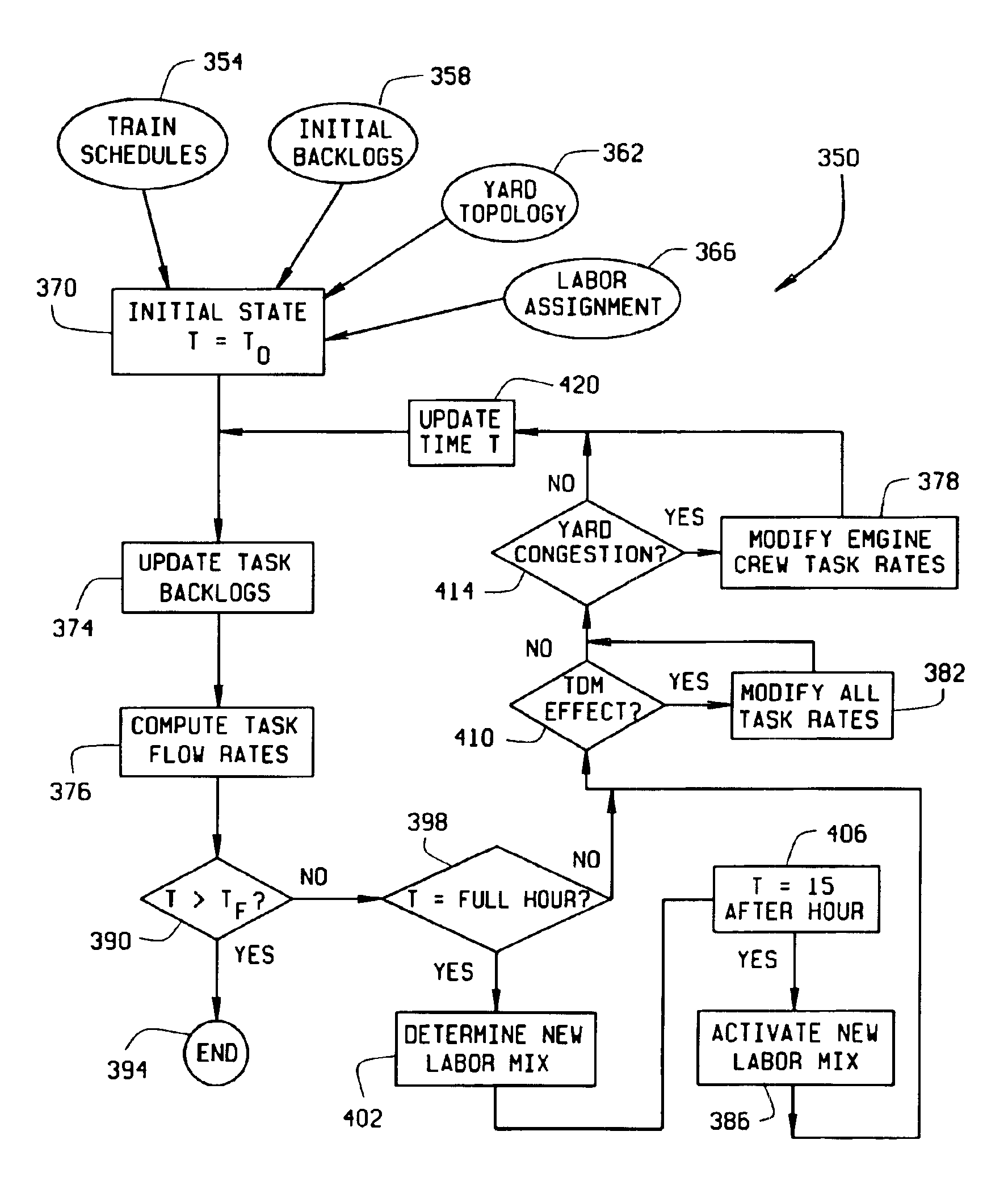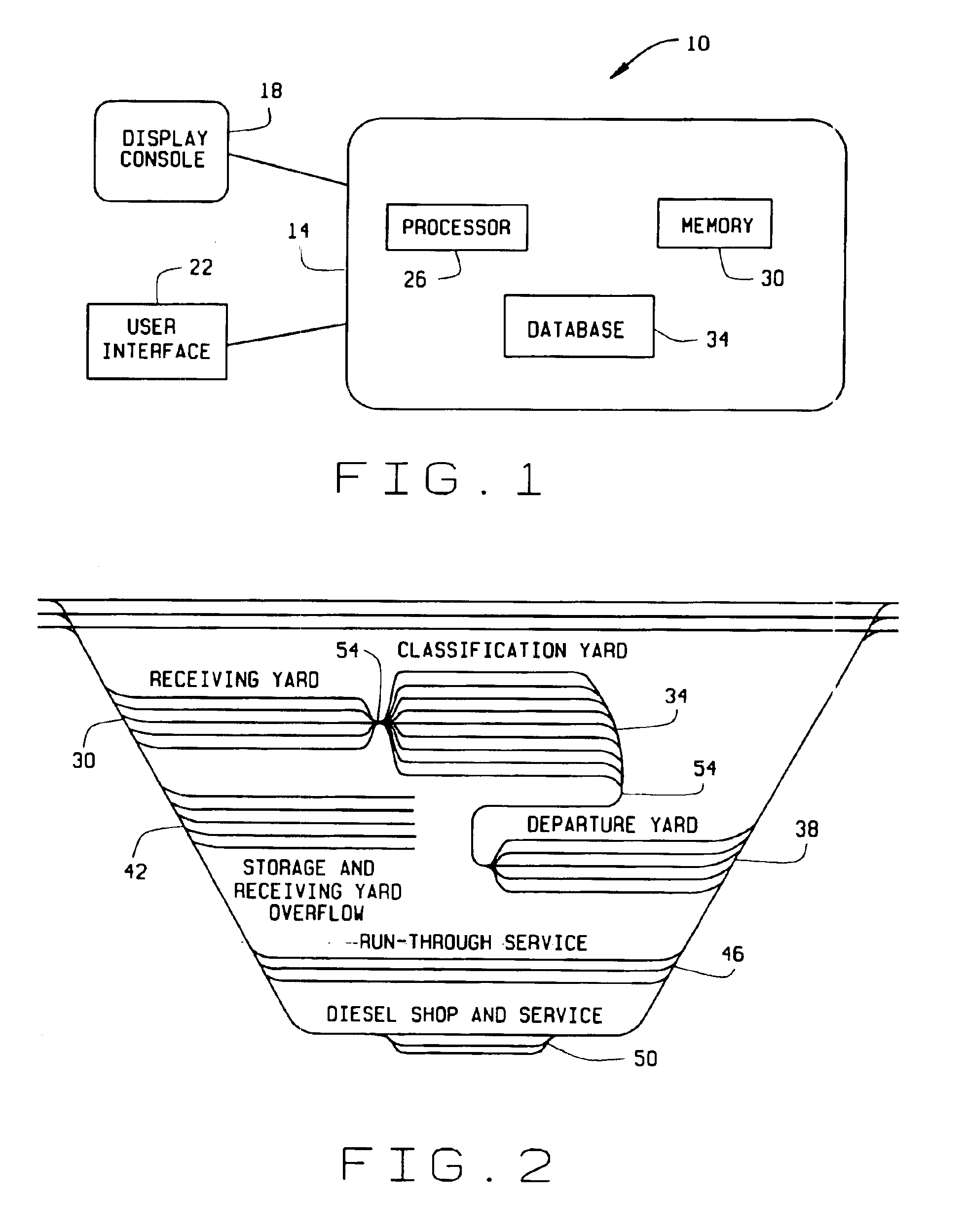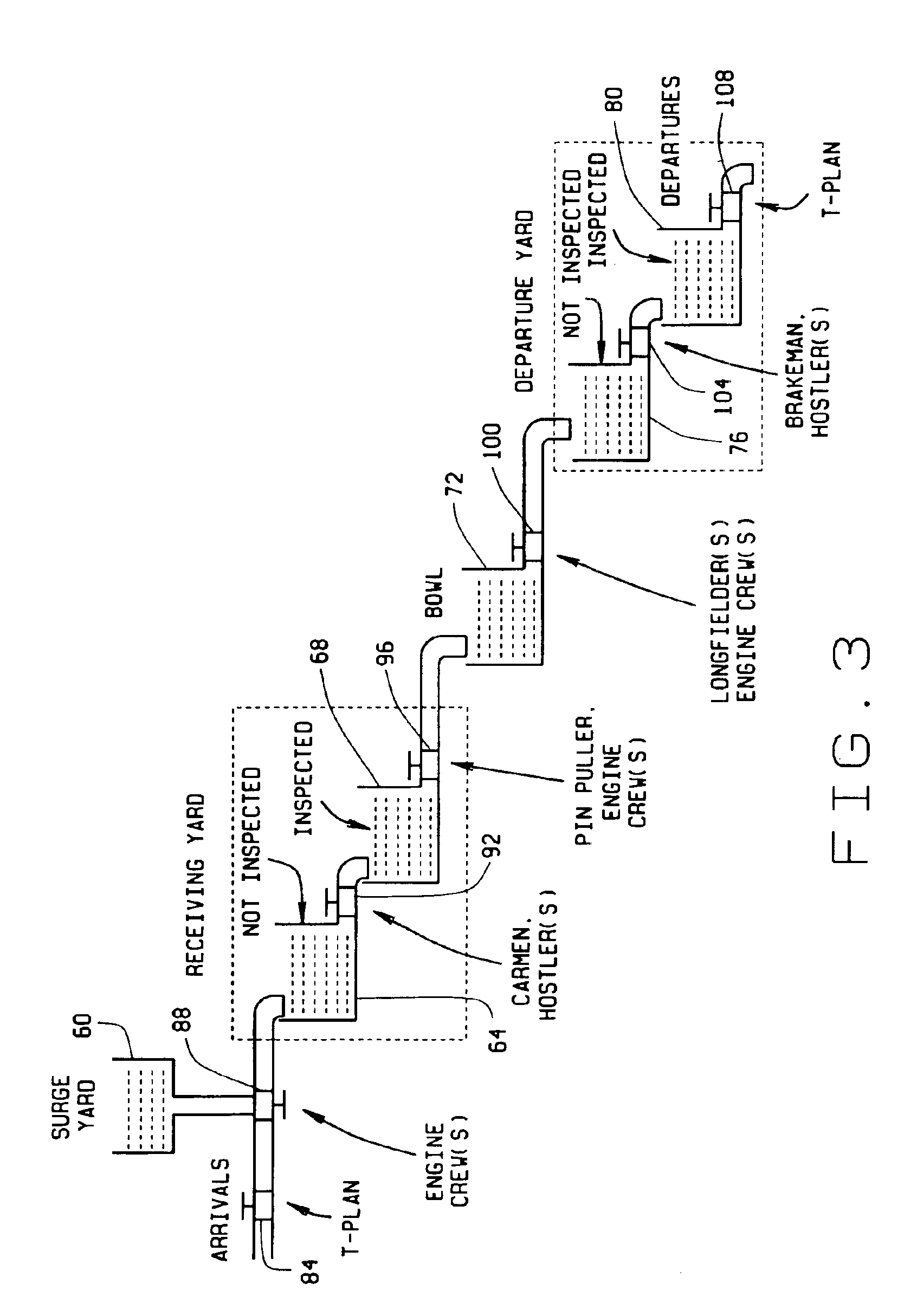Yard performance model based on task flow modeling
a task flow and performance model technology, applied in the field of railyard management, can solve the problems of inability to optimize, inability to meet the needs of service and resources, and inability to meet the needs of services and resources,
- Summary
- Abstract
- Description
- Claims
- Application Information
AI Technical Summary
Benefits of technology
Problems solved by technology
Method used
Image
Examples
Embodiment Construction
[0022]FIG. 1 is a diagram of a system 10 for implementing a yard performance model in accordance with one embodiment of the present invention. System 10 includes a computer 14, a display console 18 for viewing information input to and output from computer 14, and a user interface 22 for inputting information, parameters and data to computer 14. Computer 14 includes a processor 26 for executing all functions of computer 14, a memory storage device 30 for storing data and algorithms, and a database 34 for storing specific additional data. A yard master utilizes user interface 22 to input queries, parameters and data related to yard performance. In response to the yard master's inputs, computer 14 utilizes processor 26, memory 30, and database 34 to solve equations and execute algorithms implemented in the yard performance model.
[0023]FIG. 2 is a diagram of a railyard layout for illustrating particular railyard activities involved in implementation of the yard performance model in whic...
PUM
 Login to View More
Login to View More Abstract
Description
Claims
Application Information
 Login to View More
Login to View More - R&D
- Intellectual Property
- Life Sciences
- Materials
- Tech Scout
- Unparalleled Data Quality
- Higher Quality Content
- 60% Fewer Hallucinations
Browse by: Latest US Patents, China's latest patents, Technical Efficacy Thesaurus, Application Domain, Technology Topic, Popular Technical Reports.
© 2025 PatSnap. All rights reserved.Legal|Privacy policy|Modern Slavery Act Transparency Statement|Sitemap|About US| Contact US: help@patsnap.com



